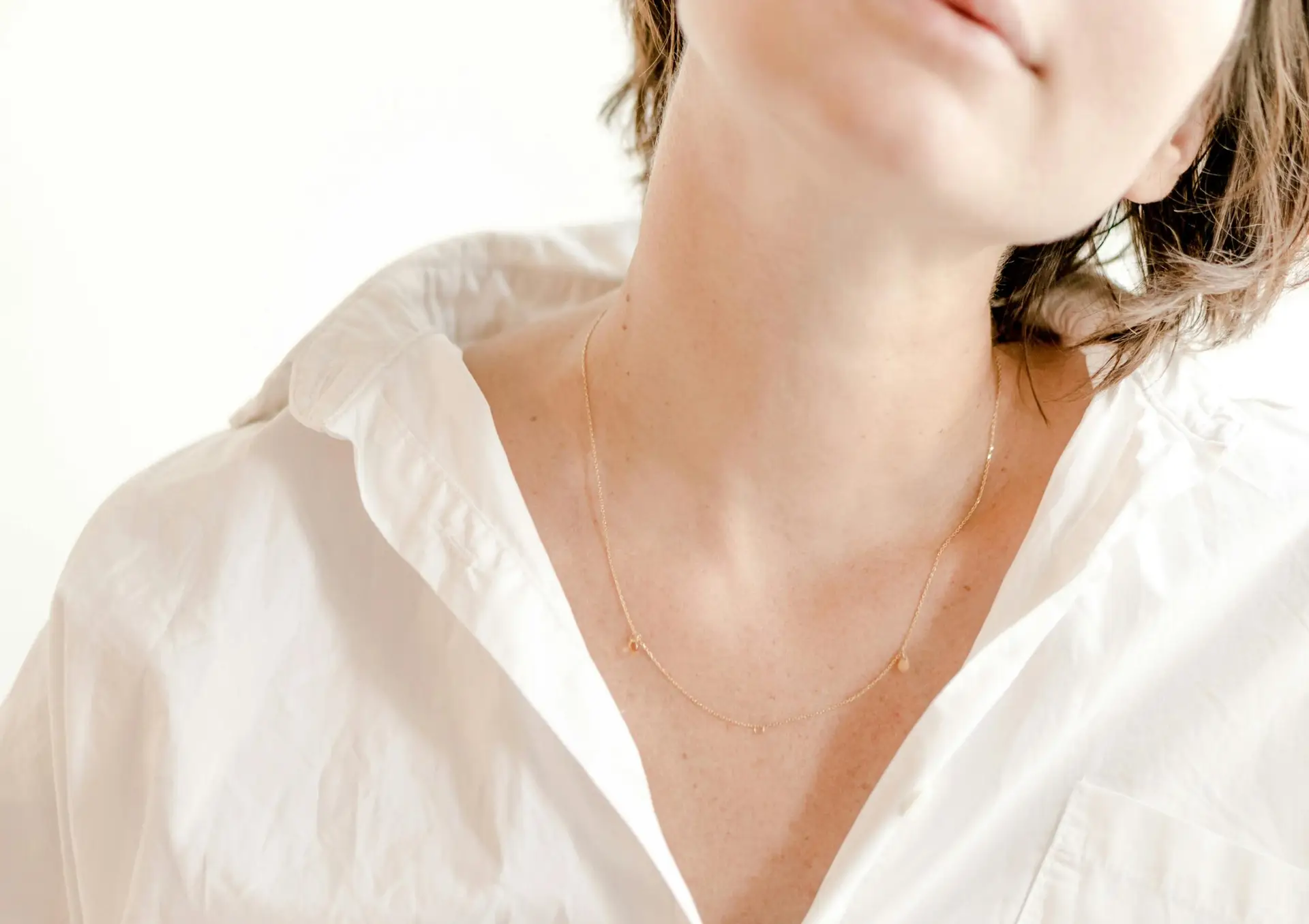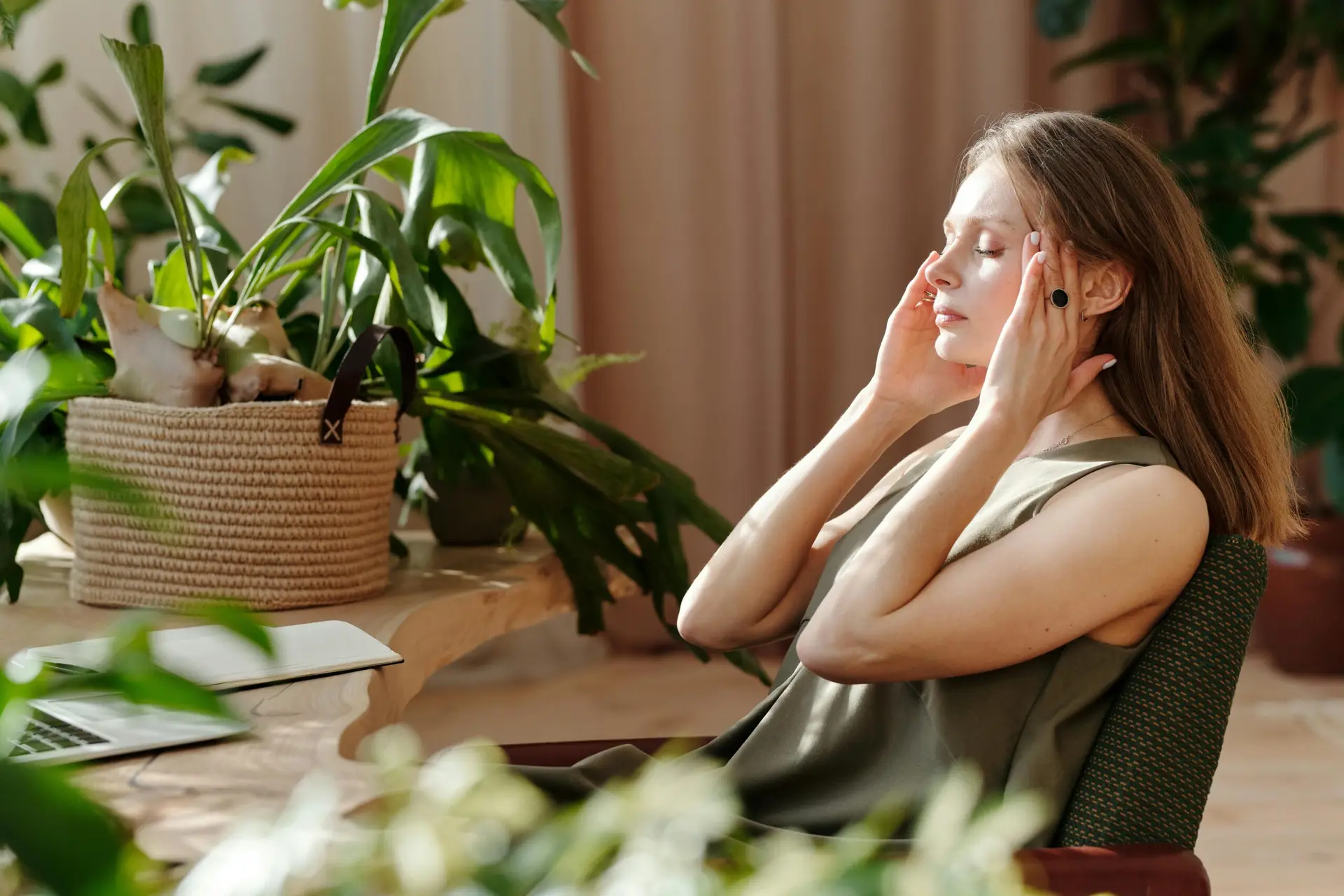
Why Does My Neck Need To Pop? If you’re like many people in Sarasota, Bradenton, or Lakewood Ranch, you’ve probably felt that distracting urge to twist your head until you hear a “crack.” For a moment, pressure fades and your neck feels lighter—then tightness creeps back, sometimes with headaches, dizziness, or jaw tension tagging along. That repeating cycle is your body’s way of saying, “Something deeper needs attention.” At Lavender Family Chiropractic—Sarasota’s upper cervical specialists—we help patients break that cycle by correcting the cause of the urge to pop: subtle upper cervical misalignment at the atlas (C1) and axis (C2).
In this in-depth guide, you’ll learn why your neck feels like it needs to pop, how upper cervical misalignment irritates nerves and disrupts balance, and how gentle, precise, non-twisting adjustments restore stability—without popping, cracking, or forcing motion. We’ll also cover the science in plain English, share practical self-care tips, and answer the Top 15 FAQs we hear in our Sarasota office every week.
Why Does My Neck Need To Pop? The Real Reason Your Neck “Needs” to Pop
That instant “ahh” after a crack isn’t alignment snapping into place; it’s usually cavitation—a harmless gas bubble releasing in a nearby, already-mobile joint. Cavitation can happen even when the actual stuck segment—the one your brain wants fixed—never moved at all. So you feel a brief relief as your nervous system is momentarily distracted, but the underlying imbalance persists.
Here’s what’s typically happening behind the urge:
- Joint Fixation Up High, Excess Movement Down Low: When the atlas or axis becomes restricted, your body borrows motion from more mobile joints below. Twisting your own neck tends to move the wrong segments—the “easy movers”—not the true restriction at C1/C2.
- Reflexive Muscle Guarding: Irritated joint receptors in the upper neck send noisy signals to your brainstem. Your body responds with protective muscle tightening. That “tight band” feeling invites you to pop, but each self-crack often worsens the instability loop.
- Nerve Irritation: The upper cervical spine surrounds the brainstem and dense nerve networks (spinal accessory nerve, trigeminal pathways, vestibular inputs). Irritation here can create sensations of pressure, fullness, imbalance, or a “stuck” feeling that begs for a pop.
- Proprioceptive Mismatch: Your brain integrates position sense from the upper neck, eyes, and inner ears. When atlas/axis are misaligned, those signals desynchronize, fueling dizziness, neck tension, and the compulsion to “reset” the system with a quick crack.
In short: the urge to pop is an alarm, not a solution. Popping is a symptom chaser. Correcting alignment is the lasting fix.
Meet the Upper Cervical Spine: Small Joints, Big Consequences
The upper cervical spine is a marvel of design:
- Atlas (C1) is a ring-shaped bone that cradles your skull.
- Axis (C2) has a vertical peg (odontoid/dens) that acts like a pivot.
- Together, C1/C2 provide ~50% of your head rotation and protect the brainstem, the body’s control tower for heart rate, breathing, blood pressure, balance, and postural tone.
Because C1 and C2 are uniquely shaped—more like a precision hinge than a blocky vertebra—small misalignments have large neurological effects. Even a degree or two of malposition can:
- Change tension on the dural sleeve around the brainstem
- Distort vertebral artery flow dynamics
- Alter cerebrospinal fluid (CSF) movement
- Irritate cranial nerve and trigeminal pathways (common in headaches, TMJ, facial pain)
- Disrupt vestibular (inner ear) integration (common in dizziness/vertigo)
That’s why people with upper cervical issues don’t just have neck tightness—they experience headaches, migraines, dizziness, visual strain, TMJ pain, brain fog, ear pressure, and even low back pain from full-body compensation.
How Upper Cervical Misalignment Irritates Nerves—and Your Life
When the atlas or axis misaligns, three things tend to unfold:
- Neurological Irritation at the Brainstem
Joint and ligament sensors (mechanoreceptors) in the upper neck flood the brainstem with error signals. Your nervous system interprets this as instability and responds by tightening muscles—especially suboccipital muscles under the skull. This tightness can pull on the dura, refer pain into the head, or trigger occipital neuralgia (sharp, electric pains along the skull base). - Flow Dynamics Shift (Blood & CSF)
Malposition can subtly alter blood and CSF flow. People describe pressure headaches, head fullness, ear pressure, tinnitus, brain fog, or visual fatigue—symptoms that often fluctuate with posture or barometric changes. - Whole-Body Compensation
Your body will sacrifice anything to keep your eyes level with the horizon. A tilted atlas may lead to a dropped shoulder, rotated ribs, a torqued pelvis, and one leg appearing shorter. That’s why neck issues often coexist with low back or hip pain—the compensation chain is real.
This web of changes explains why an upper cervical problem can masquerade as many different conditions: tension headaches, vestibular migraine, BPPV-like dizziness, PPPD, TMJ dysfunction, trigeminal neuralgia symptoms, cervicalgia, shoulder pain, numbness/tingling, and more.
Why Self-Cracking Feels Good—But Backfires
We get it: that satisfying pop can feel like freedom. But here’s the rub:
- You move the wrong joints. The stuck segment stays stuck while hypermobile joints get looser.
- You train instability. Repeated self-popping stretches ligaments that are supposed to stabilize your neck. Loose ligaments = more guarding, more tightness, more urges to pop.
- You mask the message. Temporary relief delays the proper correction your body actually needs.
If you’ve been cracking your own neck for years, you’re not broken—but you likely need a targeted, gentle correction to retrain the right segment to move while the others calm down and stabilize.
Common Triggers for Upper Cervical Misalignment
- Car accidents & whiplash (even at low speed)
- Sports impacts (football, soccer headers, cheer/gymnastics, cycling falls)
- Slips, trips, and “minor” falls from years past
- Posture stress (phones, laptops, prolonged driving)
- Dental work (long procedures with the mouth propped open)
- Birth stress (for infants and moms)
- Sleep position (stomach sleeping, stacked pillows, couch naps)
Misalignment can simmer silently for months or years, then flare with a new stressor—like a long flight, a new desk setup, or an illness that tightens everything.
Signs Your Neck Wants Alignment (Not Another Pop)
- Recurring neck stiffness that always “comes back”
- Headaches or migraines that worsen with screen time or long drives
- Dizziness, vertigo, or motion sensitivity (grocery aisles, scrolling phones)
- Jaw tightness/TMJ, ear pressure, or ringing
- Brain fog, fatigue, difficulty concentrating
- Numbness/tingling into the shoulders, arms, or hands
- Postural asymmetry: one shoulder high, head tilt in photos
- Reliance on daily popping for relief
If several of these fit, your upper cervical spine deserves a proper evaluation.
Upper Cervical First: The Elegant Way to Balance the Whole Spine
Correcting C1/C2 alignment is like leveling the foundation of a house. When the top is right, the rest of the frame can unwind. Benefits of an upper cervical-first approach include:
- Less force, more precision: We don’t have to chase every sore spot. One precise correction often calms secondary compensations.
- Neurologic reset: Clearer signals between brain and body reduce muscle guarding, sensitivity, and autonomic “overdrive” (fight-or-flight).
- Better balance integration: With accurate signals from the upper neck, your eyes and inner ears can “agree” again, easing dizziness and motion sickness sensations.
- Sustainable change: Stable alignment reduces the urge to pop, because your nervous system stops asking for a makeshift reset.
Lavender Family Chiropractic: Sarasota’s Upper Cervical Specialists
At Lavender Family Chiropractic in Sarasota, Florida, our doctors—Dr. Rusty Lavender, Dr. Jacob Temple, and Dr. Will Guzinski—focus exclusively on upper cervical chiropractic. Our care is gentle, precise, and evidence-informed—no popping, twisting, or cracking.
Our Three-Step Approach
- Measure (Don’t Guess)
- 3D CBCT imaging: Advanced cone-beam CT lets us see your atlas/axis alignment in three dimensions, visualize joint angles, and tailor your correction to your unique anatomy.
- Functional nervous system scans (Tytron): Paraspinal infrared thermography helps us detect temperature asymmetries correlating with nerve irritation and autonomic stress.
- Posture & balance screening: Subtle head tilt, shoulder height differences, and pelvic rotation are tracked over time so you can see progress—not just feel it.
- Correct (Precisely and Gently)
- We deliver a customized upper cervical correction using a gentle, specific adjustment—not a forceful twist. Many patients describe the correction as surprisingly light and calming.
- Because we’re changing how your brain processes position and balance, you may notice shifts in how you stand, breathe, or walk—signs your system is recalibrating.
- Stabilize (So It Holds)
- Strategic visit schedules support healing without over-adjusting.
- Rechecks with Tytron and posture metrics keep us objective.
- Home strategies (sleeping position, workstation tweaks, hydration, simple mobility) help your correction hold longer, so you need fewer adjustments over time.
What a Typical Patient Journey Looks Like
- Day 1: Consultation & Testing — We take a full history, CBCT images, and Tytron scans; we explain what we find in clear terms.
- Day 2: Results & First Correction — We review your images, outline your personalized plan, and—if appropriate—deliver your first upper cervical correction.
- Weeks 1–4: Stabilization — We monitor objective markers (Tytron, posture) and your symptoms. Many patients report less urge to pop, smoother head movement, improved clarity, and reduced headaches or dizziness in this phase.
- Ongoing: Optimization — As corrections hold longer, visits spread out. Our goal is simple: do less, hold more.
Who We Help
We see people with neck pain, migraines (including vestibular), tension headaches, dizziness/vertigo (BPPV-like, PPPD, MdDS, Meniere’s patterns), TMJ pain, occipital neuralgia, trigeminal-like facial pain, post-concussion issues, numbness/tingling, and stubborn low back pain tied to head-neck imbalance. If you’ve tried “everything”—PT, injections, medications—and still feel crooked, an upper cervical evaluation can be the missing link.
At-Home Habits That Help Your Correction Hold
Upper cervical care works best when you work with your body between visits. A few favorites we teach our Sarasota patients:
- Sleep smart: Back sleeping with one supportive pillow keeps your neck neutral. If you’re a side sleeper, keep your nose aligned with your sternum; avoid stomach sleeping.
- Screen sanity: Keep screens at eye level; every 20 minutes, look 20 feet away for 20 seconds (the 20-20-20 rule).
- Micro-breaks, macro results: Stand, roll your shoulders, and do 3–4 slow nose-to-wall nods every hour to reset suboccipital tension.
- Hydration & magnesium-rich foods: Fluids and electrolyte balance support muscle relaxation.
- Jaw kindness: Avoid prolonged gum chewing and teeth clenching; keep the tip of your tongue resting on the roof of your mouth behind your front teeth to relax jaw muscles.
- Let go of self-cracking: As alignment stabilizes, the urge to pop fades. If you slip, don’t beat yourself up—just get back on track.
(This section is educational, not medical advice. Always consult your healthcare provider for personalized guidance.)
Why Local Patients Choose Lavender Family Chiropractic
- Focused expertise: Upper cervical is all we do.
- State-of-the-art imaging: 3D CBCT offers precision beyond traditional X-rays.
- Objective tracking: Tytron nervous system scans and posture metrics tell us when to adjust—and when not to.
- Gentle care: No popping, twisting, or cracking.
- Team approach: Three doctors collaborating on your case so you get the best thinking every visit.
- Rave reviews: 120+ five-star experiences from families across Sarasota and Manatee counties.
When you’re searching for “chiropractor Sarasota Florida,” “upper cervical chiropractor near me,” “Vertigo doctor near me,” or “Migraine doctor near me,” you want more than a quick fix. You want a plan that makes sense, respects your time, and actually lasts. That’s our lane.
Service Areas We Proudly Support
We routinely see patients from Sarasota, Bradenton, Lakewood Ranch, Parrish, Ellenton, Venice, Osprey, Punta Gorda, St. Petersburg, Siesta Key, Longboat Key, Lido Key, and Myakka City. If you’re nearby and searching for a “chiropractor near me,” we’re closer than you think—and worth the short drive for specialty care.
Top 15 FAQs: Neck Popping, Nerves, and Upper Cervical Care
1) Why does my neck keep feeling like it needs to pop?
Because your nervous system senses restricted motion or misalignment—often at the atlas/axis—and asks for a “reset.” Popping creates noise relief (cavitation) in already-loose joints but leaves the primary restriction untouched. Correcting alignment calms the urge at its source.
2) Is cracking my own neck dangerous?
Repeated self-popping can loosen stabilizing ligaments, making nearby joints hypermobile and more prone to irritation. You might feel good for a minute, but over time the system becomes less stable and more reactive. A gentle, precise professional correction is safer and more effective.
3) Can upper cervical misalignment really cause headaches and migraines?
Yes. Upper cervical dysfunction irritates trigeminal and occipital pathways, alters neck muscle tone, and can influence vascular and CSF dynamics—all common in tension headaches, migraines, vestibular migraines, and occipital neuralgia. Correcting alignment often reduces frequency and intensity.
4) How is Upper Cervical Chiropractic different from regular chiropractic?
We focus narrowly on C1/C2 using customized vectors derived from 3D CBCT scans. Adjustments are gentle and specific, with no twisting or forceful cracking. Because we address the top-down control center, the rest of the spine can unwind with less overall force.
5) Will you twist or pop my neck?
No. Our corrections are precise and low-force. Many patients are surprised by how gentle the experience is—and by how much better their body functions afterward.
6) Can upper cervical care help dizziness or vertigo?
Often, yes. The upper neck provides key proprioceptive input to your balance system and communicates closely with the vestibular and oculomotor systems. When those signals harmonize again, many patients report steadier balance, less motion sensitivity, and reduced vertigo-like episodes.
7) What about TMJ pain and jaw tension?
Jaw mechanics hinge on head-neck alignment. A tilted atlas can change how the jaw tracks. By restoring upper cervical balance, we frequently see improvements in TMJ pain, clenching, ear pressure, and facial tension.
8) How quickly will I feel better?
Some people feel easier head movement and less urge to pop immediately after a correction; others improve steadily over a few weeks as tissues adapt and inflammation resolves. Our goal is durable change, not a one-day miracle.
9) How many visits will I need?
It varies. Early on, we may see you more often to help the correction hold; as stability improves, visits spread out. We rely on Tytron scans and objective checks to avoid over-adjusting. The long-term goal is fewer adjustments that hold longer.
10) What testing do you use?
- 3D CBCT imaging for precise atlas/axis measurements
- Tytron paraspinal infrared thermography to monitor nervous system stress
- Posture & balance assessments to track objective changes over time
11) Do you adjust kids or seniors?
Yes. Our methods are gentle and tailored to each patient’s anatomy and health history. Families appreciate a conservative approach that avoids twisting.
12) I’ve tried PT, massage, or medications. Can this still help?
Absolutely. Those can be valuable, but if the upper cervical foundation is off, results may be temporary. We often collaborate with other providers; upper cervical correction doesn’t replace good care—it helps everything else work better.
13) Do you take insurance?
Our office is out of network with insurance. Many patients receive a superbill to submit for potential reimbursement based on their plan. We also offer multiple payment options and financing to keep care accessible.
14) How long is the first visit, and what should I expect?
Plan on 60–90 minutes. We’ll review your history, perform a detailed exam, take CBCT images, run Tytron scans, and discuss whether you’re a good candidate. If appropriate, you’ll receive your first gentle correction with a clear follow-up plan.
15) Why choose a Sarasota clinic if I live in Bradenton, Parrish, or Lakewood Ranch?
Because specialty upper cervical care is worth the short drive. Patients from Bradenton, Lakewood Ranch, Parrish, Ellenton, Venice, Osprey, Punta Gorda, St. Petersburg, Siesta Key, Longboat Key, Lido Key, and Myakka City choose us for our precision imaging, gentle approach, and consistent results.
What to Do Next if Your Neck Keeps Asking to Pop
- Stop forcing it. Give your ligaments a chance to calm down.
- Get measured. If you’re in or near Sarasota/Manatee, we’ll show you exactly what your atlas and axis are doing using 3D CBCT.
- Correct gently. A precise upper cervical correction can quiet nerve irritation, reduce guarding, and remove the compulsion to pop.
- Stabilize. With simple home strategies and smarter ergonomics, corrections hold longer—and life feels easier.
About Lavender Family Chiropractic (Sarasota, FL)
- Address: 5899 Whitfield Ave Ste 107, Sarasota, FL 34243
- Phone: (941) 243-3729
- Website: www.chiropractorsarasotaflorida.com
- Instagram: @lavenderfamilysrq · TikTok: @drrustylavender
Lavender Family Chiropractic in Sarasota Florida offers complimentary consultations to learn more about you. Click the link below!
https://intake.chirohd.com/new-patient-scheduling/724/lavender-family-chiropractic
Visit our Website!
To learn more about us go to http://www.chiropractorsarasotaflorida.com
We also service Bradenton, Parrish, Ellenton, Ruskin, Venice, Tampa, St. Pete, Osprey, Longboat, Lakewood Ranch, Myakka City.
If you are in Tampa, Fort Myers, or Salt Lake City, you can visit my other locations! NeckWise Upper Cervical. Visit, www.neckwise.com
If you are not local, visit www.uccnearme.com to find a doctor in your area.
We are proud to be recognized by patients as the best upper cervical chiropractic office in Sarasota, Lakewood Ranch, and Bradenton. If you’re searching for “chiropractor near me,” “chiropractor Sarasota Florida,” “upper cervical chiropractor near me,” “Vertigo doctor near me,” or “Migraine doctor near me,” our team—Dr. Rusty Lavender, Dr. Jacob Temple, and Dr. Will Guzinski—is ready to help.
Final Encouragement
You don’t have to keep chasing cracks to feel okay. The urge to pop is not a personality trait—it’s a signal. When you correct the true upper cervical misalignment, your nervous system relaxes, muscles stop guarding, balance improves, and the need to pop simply fades into the background. That’s not luck; it’s good biomechanics, smart neurology, and a precise plan tailored to you.
If your neck is asking for help, listen compassionately—and let our team at Lavender Family Chiropractic help you find relief that lasts.
Ready to start? Call (941) 243-3729 or visit www.chiropractorsarasotaflorida.com to schedule your consultation.





